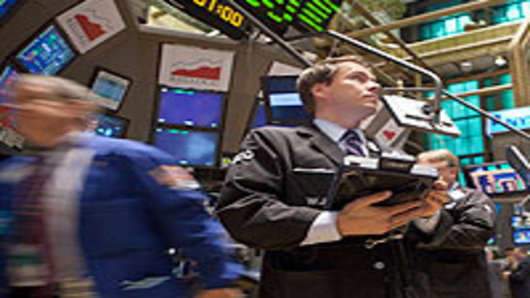The cause of the Dow's dramatic intraday market slide of nearly 1,000 points Thursday is still under investigation.
There was initial speculation of human error. Now there is a focus on computerized trading.
The meltdown was electronic trading, not a "fat finger," New York Stock Exchange Euronext CEO Duncan Niederauer told CNBC Friday.
That left many unanswered questions about how computerized trading works.
High-Frequency Trading systems (HFTs) are computerized trading programs that make money two ways. They place bids to make small amounts of money from liquidity rebates provided by the exchanges, or they make tiny per-share profits.
While this is only dealing with fractions of cents per transaction, HFTs together execute trades on billions of shares a day, rendering it extremely profitable.
Supporters of high-frequency systems claim to add essential liquidity. But some critics claim that HFTs have increased the amount of volatility and instability in the markets.
A “group think” phenomenon occurs whenever there’s a major economic announcement, causing these systems to instantaneously place or pull thousands of bids and offers from the exchanges, not unlike a pool of fish frightened by a proximate shark.
This has the potential to confound other investors by issuing and then canceling orders almost simultaneously.
“HFTs add liquidity, but obviously they move extremely quickly. The main purpose of HFTs is to arbitrage between different venues, ensuring that the market is efficient as possible. The challenge is the speed,” Patrick Humphries, spokesman for the London Stock Exchange, said.
“It has lead to an atomization of order books. The average trade size now is £3,000 ($4,500). Ten years ago it was about £40,000,” Humphries said.
While most quantitative-driven programs would normally try and take advantage of market aberrations like Thursday's violent drop, it is murky whether program trades were more involved in driving the market down or helping push it back up.
Survival of the Fastest
Computerized trading may have started a kind of banking arms race, where survival of the fittest means survival of the fastest.
Proximity to the exchanges is also crucial for HFTs profitability.
In Germany, hedge funds and banks congregate as close as possible to the Eurex to get the edge, and in London, it’s the same.
"A number of the top banks, who I won’t name, will have servers located next to the (LSE) trading system," Humphries said.
But the sharp market fall yesterday may not have been aggravated by HFTs trading too much, but rather, not trading at all, he added.
"“They may have stopped trading – which could have compounded the issue."
Algorithm-based trading has also been accused of illegal front-running.
Front running is where a trader executes orders on a security for his own account ahead of similar pending orders from his or her customers.
High-frequency traders can use "flash trades" to read incoming order flow and use the speed of their systems to jump ahead of customer orders.
But if high-frequency traders are simply faster than everyone else and not illegally front-running, then this trading is no less legitimate than the use of the steam engine instead of a horse and buggy.


